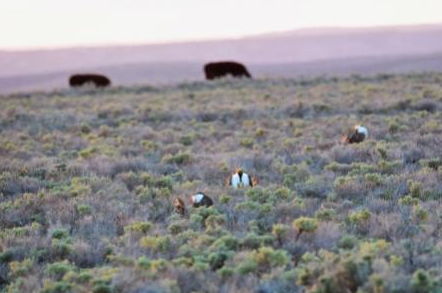Greater Sage-grouse Responses to Livestock Grazing in Semi-Arid Sagebrush Rangelands

The distribution and abundance of the greater sage-grouse have declined in the last 60 years. Range contractions and population declines have been attributed to anthropogenically driven loss and fragmentation of their sagebrush habitats. Grazing by domestic livestock remains the predominant anthropogenic land-use across the sagebrush ecosystem in North America, occurring on 87% of remaining sage-grouse habitat. However, little research has been conducted to evaluate sage-grouse response grazing.
Thanks to initiative support, we leveraged funding from Deseret Land and Livestock, the Bureau of Land Management, Rich County, and the Utah Division of Wildlife to evaluate the link between livestock grazing at the landscape level to sage-grouse production. This research will provide definitive information regarding sage-grouse vital rates and habitat selection with respect to the presence of cattle and the effects of livestock grazing on vegetation composition and structure. Our research will also provide managers with areas most suitable for sagebrush treatments that will have positive impacts on both livestock grazing and sage-grouse.
Professor Terry Messmer, Department of Wildland Resources, director of the Berryman Institute, Terry.Messmer@usu.edu

